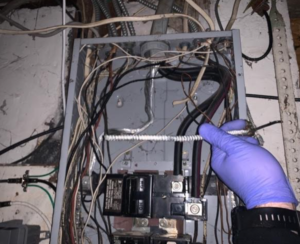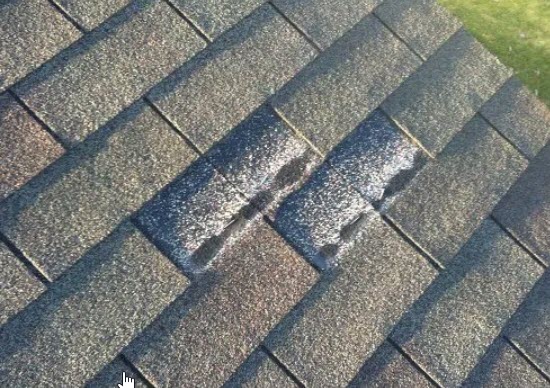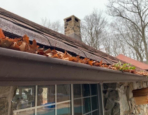 A home inspection is one of the most important steps in buying, selling, or maintaining a home. It reveals potential problems that could cost thousands of dollars in repairs if left unaddressed. Whether you’re a homeowner, homebuyer, or real estate agent, understanding the most common home inspection issues can help you make informed decisions.
A home inspection is one of the most important steps in buying, selling, or maintaining a home. It reveals potential problems that could cost thousands of dollars in repairs if left unaddressed. Whether you’re a homeowner, homebuyer, or real estate agent, understanding the most common home inspection issues can help you make informed decisions.
At Peace of Mind, we’ve conducted countless home inspections, and some problems appear more frequently than others. Here are the top five issues we find during home inspections—and why they matter.
1. Roof Leaks & Damage 🏠💧
Why It’s a Problem:
Your roof is your home’s first line of defense against the elements. Over time, shingles can crack, curl, or go missing, allowing water to seep in. Damaged flashing, clogged gutters, and aging materials also contribute to leaks.
Common Signs of Roof Problems:
✅ Water stains on ceilings or walls
✅ Missing, curled, or cracked shingles
✅ Mold or mildew in the attic
✅ Sagging roof areas
Potential Consequences:
🚨 Unaddressed roof leaks can lead to structural damage, insulation problems, and mold growth, making repairs even more expensive.
Solution:
A professional roof inspection can identify problems early. Homeowners should clean gutters regularly, inspect for damage after storms, and replace aging roofing materials to prevent costly issues.
2. Electrical Issues ⚡🔥
Why It’s a Problem:
Outdated or faulty electrical wiring is a serious safety hazard. Many older homes still have aluminum wiring, knob-and-tube systems, or overloaded breaker panels, all of which can increase the risk of electrical fires or shocks.
Common Signs of Electrical Problems:
✅ Flickering or dimming lights
✅ Frequent circuit breaker trips
✅ Warm or discolored outlets
✅ Lack of GFCI (Ground Fault Circuit Interrupter) outlets near water sources
Potential Consequences:
🚨 Faulty wiring is one of the leading causes of house fires. Overloaded circuits can also damage appliances and electronic devices.
Solution:
A licensed electrician should inspect and upgrade outdated wiring, ensuring it meets modern safety codes. If a home lacks GFCI outlets, they should be installed in bathrooms, kitchens, and outdoor areas for added protection.
3. Plumbing Problems & Water Damage 🚰🚨
Why It’s a Problem:
Leaky pipes, outdated plumbing materials, and poor water drainage are among the most frequent issues we find during inspections. Small leaks can cause water damage, mold growth, and structural weakening over time.
Common Signs of Plumbing Issues:
✅ Low water pressure
✅ Leaking pipes or fixtures
✅ Slow drains or frequent clogs
✅ Water stains on ceilings or walls
Potential Consequences:
🚨 Ignoring leaks can lead to rot, mold, and expensive water damage repairs. Some leaks can also increase water bills significantly.
Solution:
Regular plumbing inspections can catch leaks early. Homeowners should also check for signs of water damage, keep drains clear, and replace outdated plumbing materials like polybutylene or galvanized pipes.
4. Foundation Cracks & Structural Issues 🏚️
Why It’s a Problem:
Your home’s foundation supports everything above it. Over time, soil movement, moisture changes, and poor drainage can cause cracks, settling, or shifting.
Common Signs of Foundation Issues:
✅ Cracks in walls, ceilings, or floors
✅ Doors and windows that stick or don’t close properly
✅ Uneven or sloping floors
✅ Gaps between walls and ceilings
Potential Consequences:
🚨 Left unchecked, foundation problems can compromise your home’s structural integrity, leading to costly repairs or even unsafe living conditions.
Solution:
A foundation specialist can assess cracks and settling to determine the best repair solution. Proper drainage, gutter maintenance, and grading the landscape away from the foundation can help prevent water damage and shifting soil.
5. HVAC System Deficiencies ❄🔥
Why It’s a Problem:
Your heating, ventilation, and air conditioning (HVAC) system keeps your home comfortable year-round. However, dirty filters, neglected maintenance, and aging systems can lead to inefficiency, poor air quality, and system failure.
Common Signs of HVAC Issues:
✅ Weak airflow from vents
✅ Inconsistent temperatures
✅ High energy bills
✅ Unusual noises from the furnace or AC unit
Potential Consequences:
🚨 A failing HVAC system can increase energy costs, decrease indoor air quality, and leave homeowners without heat or AC when they need it most.
Solution:
Regular HVAC maintenance, including changing air filters, cleaning vents, and scheduling annual inspections, can prolong the system’s lifespan and prevent costly breakdowns.
Final Thoughts: Why Home Inspections Matter
A home inspection isn’t just a formality—it’s a crucial step in protecting your investment. Identifying these common problems before buying or selling a home can save thousands in unexpected repairs and ensure a safe, comfortable living environment.


